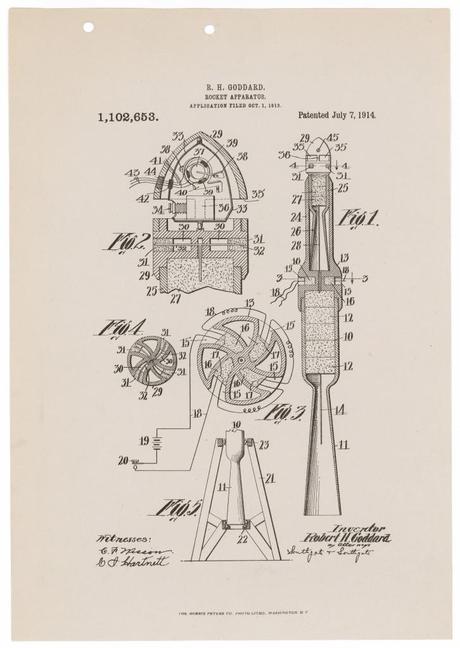
Some roaring revolutions often have humble and quite origins. This was witnessed in the case of the Space Age. A Saturn V rocket was set off from Cape Kennedy about forty five years earlier and the very first human landings on the moon began henceforth. The anniversary of the same event is being celebrated by multiple scientists and even Buzz Aldrin himself. Virtual and live recollections and reminiscences try to keep the dawning of the Space Age fresh in public memory. However, the centennial of the crucial event that made all of this possible is quietly shrouded in anonymity a midst all the uproar over the achievements mentioned earlier.
Robert H. Goddard received a unique patent about a hundred years ago. This pertained to a rocket powered by liquid fuel, as similar to the one that finally carried Michael Collins, Buzz Aldrin and Neil Armstrong to the moon. This was the biggest little step that actually enabled mankind to take a gigantic stride! Goddard got the boost he wanted to change his reflections and theories on space and rockets into tangible propositions. His first patent was for a solid fuel rocket and was approved in 1914. Goddard then embarked on multiple studies dealing with rocketry and made use of various nozzles and even gunpowder charges. He received a grant from the Smithsonian Institution for his experiments.
Goddard’s report, entitled A Method of Reaching Extreme Altitudes delineated his theory of sending a rocket directly to the moon and detonating an explosive charge after its arrival for proving the success of the journey. These experiments were instrumental in the formation of NASA and Gemini, Apollo and Mercury sequences that finally led to the landmark achievement of man landing on the moon. Goddard received his fair share of both acclaim and ridicule. He was ridiculed in an editorial of The New York Times, but proved his point when the same paper brought out a correction, stating that Newton’s laws were relevant for rockets which could function in atmospheres and vacuums with equal ease.
Goddard started becoming an icon in his own right and attracted the admiration of many scientists and researchers. One of his photographs with his beloved liquid fueled rocket in 1926 is one of the most defining moments of the space age that was to come. This photograph was taken just before the rocket embarked on a test expedition. Goddard remains the pioneer of the early Space Age and all subsequent exploration that took place. Yet, his achievements are not as feted as they ought to!
Goddard paved the way for free thinking and dynamism when it came to establishing the tangible possibility of space exploration and this is where his contributions are most remembered. Now that man has started making greater strides into space, one hopes that Goddard’s legacy finds its fruitful successors!

